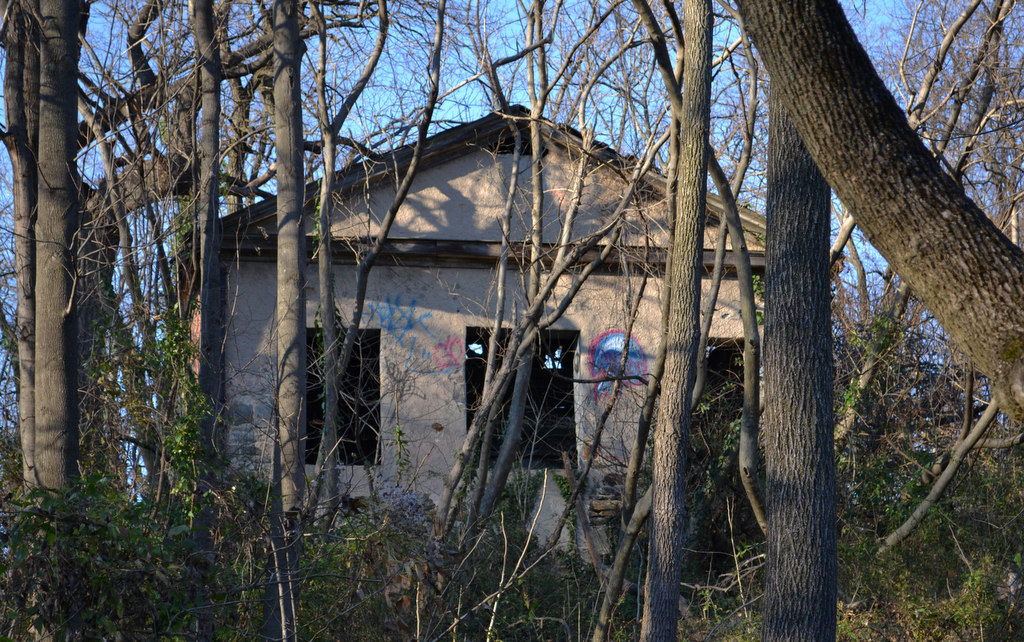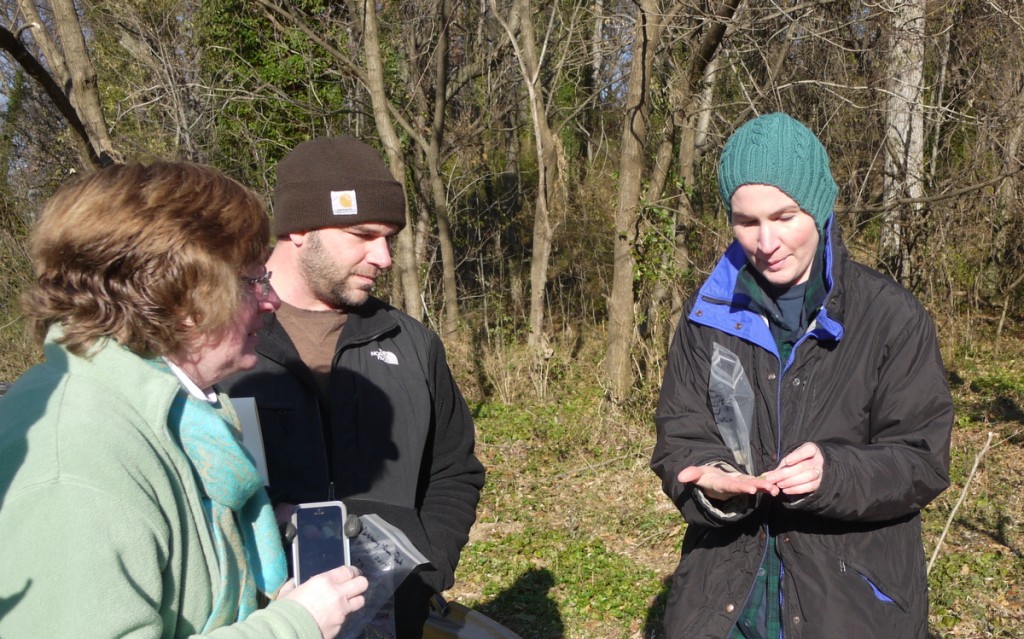We’re glad to share this post from local archeologist Lisa Kraus about a new project we’ve been working on this fall: archeology in Herring Run Park! Lisa and her husband, Jason Shellenhamer, along with volunteers from the Northeast Baltimore History Roundtable have made some exciting finds in just the past few weeks. Read on for Lisa’s reflections on our progress and learn more about archeology in Baltimore.
My husband Jason and I moved to Northeast Baltimore in 2012, and were immediately intrigued by the tantalizing little glimpses of history we saw all over our neighborhood. We spotted a few 19th-century farmhouses sitting a little askew on the predominantly 20th-century landscape. We heard stories about an old pickle factory that once sold pickles for a nickel, right down the street from our house. We spotted a one-room schoolhouse that had been expanded into a social club, and an old stone mill building built into a hillside. We walked through the 19th-century German Lutheran cemetery nestled in the center of Montebello Park. While walking our dogs, we found Hall’s Spring and the shell of the old Eutaw Methodist Church in Herring Run Park, and wondered about the vanished communities those facilities once served.

Since we’re both archeologists and share a persistent curiosity about the past, we started looking at historical maps of Baltimore and trying to reconcile them with the modern landscape. We spent weekends at the archives doing research. It became clear that our neighborhood had a deep history, with European- and African-American settlements dating back to the 1600s and 1700s, and the possibility of prehistoric occupation stretching back thousands of years. To our surprise, we found that very little archaeology has been done in our neighborhood and we started thinking about how we could change that.

Through some sort of cosmic serendipity, right about the time Jason and I started talking about starting an archaeology program in our neighborhood, the Northeast Baltimore History Roundtable approached Baltimore Heritage about starting a public archaeology project in Herring Run Park. After meeting with both groups and coordinating with the Friends of Herring Run Parks and the Baltimore City Department of Recreation and Parks, we set out for the park to see what we could find.
We were searching for sites that could tell us something new, something we couldn’t learn from books, maps or other records. After all, written history often reflects the interests and concerns of a limited group of people. Many wealthy and influential people called Baltimore home over the years, but most of the city’s former residents left few written records behind. Archeology is one of the best ways to learn more about the lives of the poor, the working classes, immigrants, women, children, free and enslaved African Americans, and Native Americans.

Very little is known about early residents of Northeast Baltimore. Who worked at the mills, the hotels and taverns, the farms that existed here in the 1800s? Who were the earliest immigrant settlers in the area, and where did they live? Were there Native American settlements and camps here? What were the lives of all these early residents like, and how did they influence the area that eventually became Greater Lauraville? How has the neighborhood changed over time, and what has stayed the same?
Over the last few months, we’ve discovered sites in Herring Run Park that could answer many of these questions, and raise many more. We’re looking forward to working with our partners, neighbors, students and volunteers as we make more discoveries, and we hope you’ll join us!


Would love to get involved. Parent of young explorers and husband to a school counselor in the city and a self. Proclaimed native history buff. Theron 443-320-3997 want to get involved!